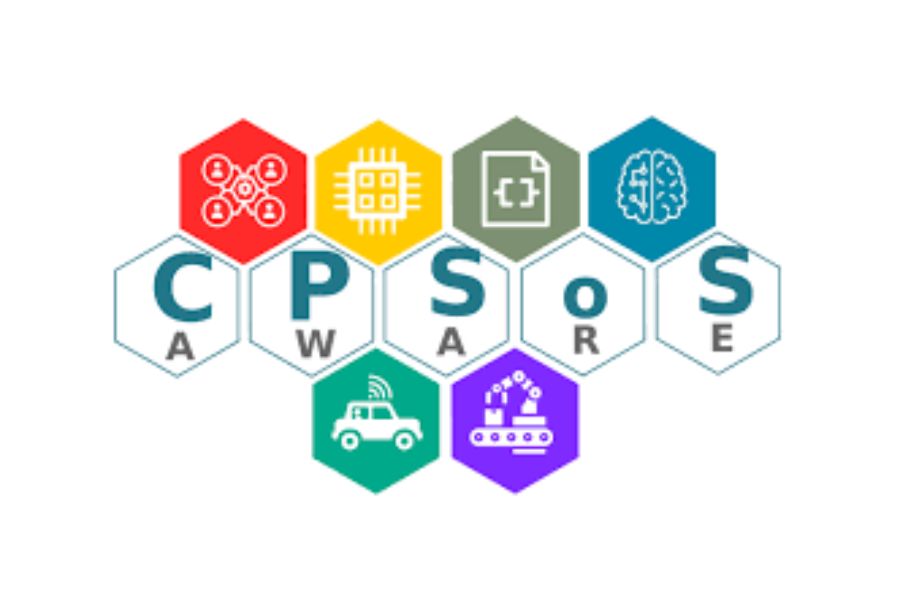Project Name: Cross-layer cognitive optimization tools & methods for the lifecycle support of dependable CPSoS
Open Call Topic(s): Resilience
Description
Software is all around us – from smart grids to robotics and intelligent manufacturing. Cyber-physical systems embed software into the physical world. The EU-funded CPSoSaware project is developing a holistic and innovative approach. For testing in the manufacturing industry and with semi-autonomous connected vehicles, the project will design new models and software tools to allocate computational power/resources to the CPS end devices of the system by determining and autonomously generating what cyber-physical processes will be handled by a device’s heterogeneous component (processor cores, GPUs, FPGA fabric, software stacks). Making maximum use of artificial intelligence to boost reliability, fault tolerance and security at system level, the CPSoSaware system will also interact with human users through extended reality visual and touchable interfaces.
The project is developing and applying different technologies in an intelligent CPS system in two main fields:
- Automotive (ADAS systems)
- Manufacturing (robot automation/Human Robot Collaboration)
The developed technologies are coping with SW, HW, security, resilience, AI application, communication protocols, digital twins and so on.
Reason for applying to HSbooster.eu services
As stated, the base developments of the project can be affected by existing standards or may be innovative with reference to technical base development considered in the standards.
Because of this reason the Task 7.3 is looking for additional “advisory” support that can:
- Help the project in identifying the referencstandardisationon landscape
- Help analyding identifying the needs for new standards
- Give hints on eventual following steps in case the need becomes evident (identification of the proper standardisation body, procedures to contact them and eventually influence the standardisation process
Main Standardisation Interests
The project does not aim at developing topics out of the standardisation framework but rather at developing and applying innovative solutions in the field of CPSoS. No development is known to be out of standard or eventually affecting standards; the two final use-cases are defined in a very well-known standardisation framework, and the two end-user partners (Centro Ricerche FIAT and Panasonic Automotive) constantly pay attention to the respect of regulation and standards from the application and functional point of view. The use-cases are defined around the standardisation to respect it. Nevertheless, base developments can be affected by existing standards or may be innovative with reference to technical base development considered in the standards.
In this framework the project has a task (T7.3: Standardization and Concertation Activities) with the aim to support the partnership in the identification of standardisation needs and concertation with main standardisation bodies and technical committees if needed; in details the task aims at:
- performing a deeper analysis of existinstandardsrd related to the use-cases;
- analysing the cross-relevance between technical developments, existing standards and technical committees;
- planning actions toward the dissemination of developed contents that might be relevant to standard’s developments.
- The project performed its initial collection of feedback from the partners (D7.5 “Preliminary Version of Standardization and Concertation Activities Report” – Attached)
To select and find applicable standards and technical specifications, we decide to proceed as follows:
- Collect and classify known standards related to the field of application of the two use-cases and highlight those that are more relevant in the use-cases.
- Collect and classify topics developed in the CPSoSaware project which are strongly related to/affected/affecting existing standard, highlighting those concepts where the specific development in the project could be limited/hindered by the strict respect to existing standards, or eventually when the development is in a non-standardized zone (missing standards).
- Create a table of contacts and activities by the partners in standardization bodies.
- Create a set of planned actions by the project to share developments with the standardization bodies with the aim to fill gaps.
Highlight remanent issues that must be considered in exploitation plans for actions after the end of the project.
Project Acronym: CPSoSaware

Grant Agreement Id: 871738
Start Date:
End Date:
Programme: H2020-EU.2.1.1. - INDUSTRIAL LEADERSHIP - Leadership in enabling and industrial technologies - Information and Communication Technologies (ICT)
Call for proposal: H2020-ICT-2018-20
Funding Scheme: RIA - Research and Innovation action


